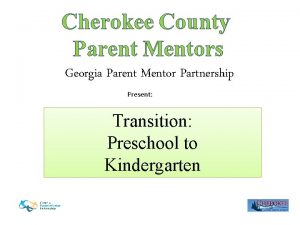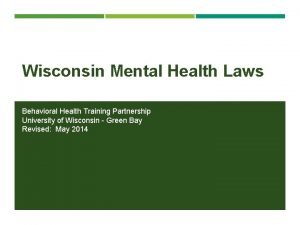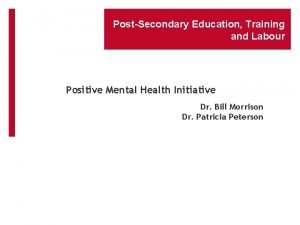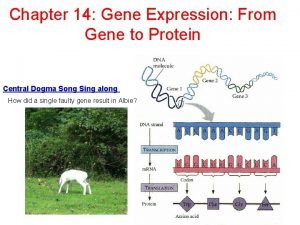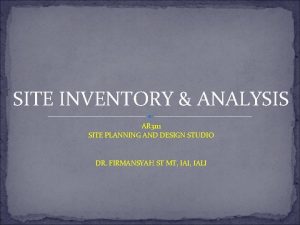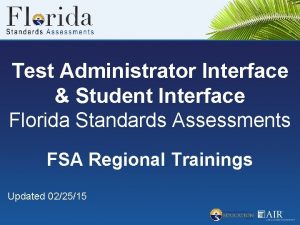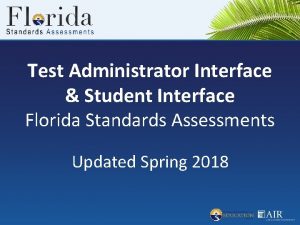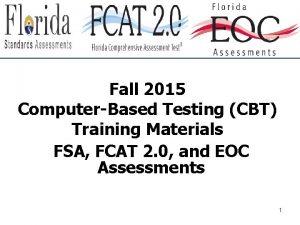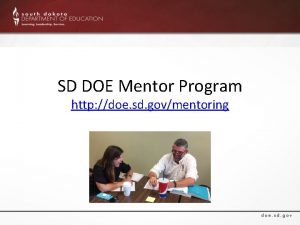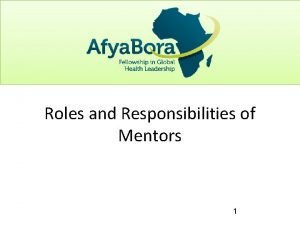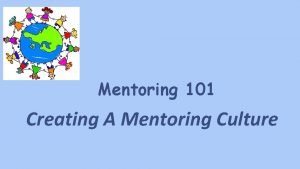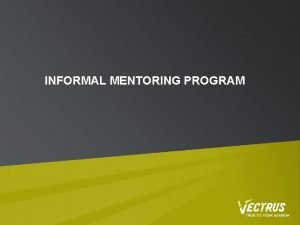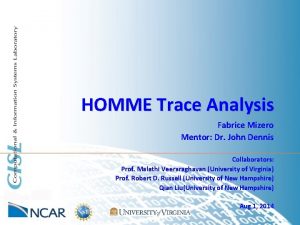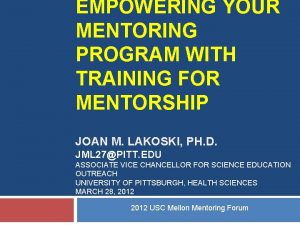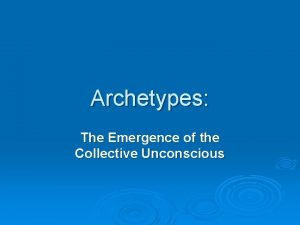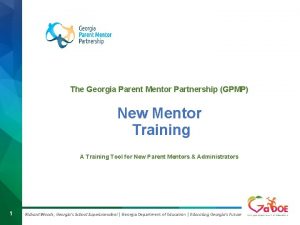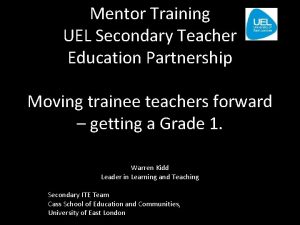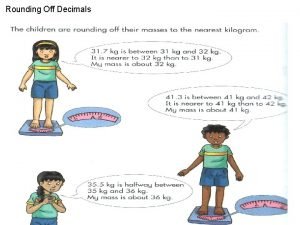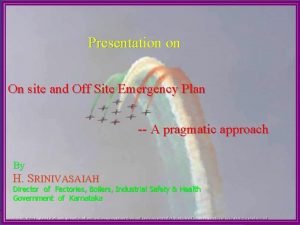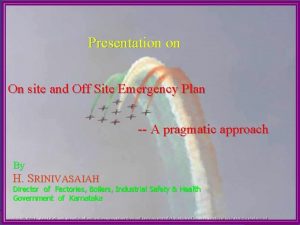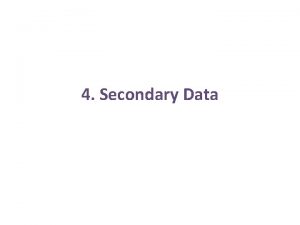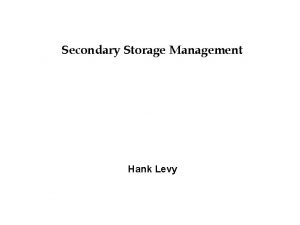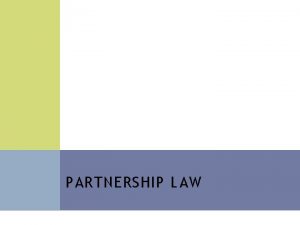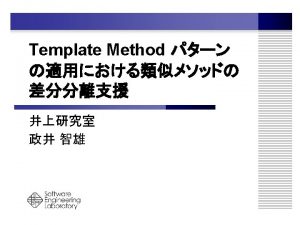Secondary Partnership New Mentor Training Off site mentor


































- Slides: 34

Secondary Partnership New Mentor Training Off site mentor training

Mentoring. . . “A formalised process whereby a more knowledgeable and experienced person actuates a supportive role of overseeing and encouraging reflection and learning within a less experienced and knowledgeable person, so as to facilitate that person’s career and personal development. ” Roberts, A. (2000: 160) Mentoring Revisited: a phenomenological reading of the literature Mentoring and Tutoring, Vol. 8, No. 2, 2000

Aim The aim of ITT is to produce effective teachers. To do this you need to have effective trainers (mentors and tutors). We aim to develop committed, creative and confident intelligent professionals, who possess a broad perspective of education and who are able to teach in a wide variety of school settings.

Pre-requisites for training as a mentor • the ability to model good teaching • a commitment to raising the quality of education • a commitment to the professional development of teachers • good interpersonal skills and communication skills • the ability to reflect, identify key traits, set targets and monitor progress

The Mentoring Role Critical f o Friend t c i l f n ? t o C eres t in Pastoral Assessor Carer 5

Critical Friend Assessor Trainer Pastoral Carer

Consciousness and Effectiveness Model (source unknown) 7

Teachers come to mentoring with predefined notions of their roles, which reflect deep and abiding beliefs about teaching and learning to teach. Such beliefs are often tacit, and are likely to remain so without conscious efforts to examine, or even confront them. For example, one commonly held belief is that teaching is a highly personalised practice of finding one’s own style and that good teachers work things out for themselves. Ironically, such beliefs may prompt mentors to limit their mentoring for what they believe to be the protégé’s own good. (Young et al. 2005)

Preferred mentoring styles (Young et al. 2005): Responsive – the mentor looks to the trainee to set the agenda, ask questions, raise concerns and manage his/her learning – often characterised by an ‘open door’ approach Interactive – the agenda is set jointly, a mutually supportive relationship, the mentor seen as colleague and trusted advisor, the trainee as a protégé – characterised by open conversations on issues of mutual concern Directive – the mentor sets the agenda, has clear expectations of trainee’s performance – feedback characterised by directives rather than considerations or discussion, expectation that trainee should emulate the ‘master’, a deficit view of trainee’s ability

Preferred Mentoring Style • There is a tendency for mentors to have a “default” style • The tendency is not to move out of the default style until it is too late • The key is to adopt the style that is going to be most effective in moving the trainee forward

Mentoring Style • Responsive – Assumes the trainee knows the question – Waits for the trainee to develop – frequently they don’t! • Interactive – Time consuming – Mentors end up doing it for the trainee – Difficult to give up / hand over • Directive – Assumes the mentor knows what’s best for the trainee – Trainee’s agenda is not heard or considered – ‘Cloning’ is inevitable

The tendency for mentors to withdraw in some measure at the mid-year point, becoming more distant and disengaged, suggests that these mentors were acting, at least at some level, on the commonly held assumption that learning to teach is ultimately a solitary act… that teachers are really best served when allowed to ‘find their own way’. These mentors’ aim… was to get the trainees up and running – to secure proficiency in the mechanics of teaching – independent of any assistance from the mentor as soon as possible. Once this was achieved, the mentor’s work was essentially finished. Both assumptions severely and unnecessarily limit beginning teachers’ and mentors’ development (based on Young et al 2005).

Critical Friend Assessor Trainer Pastoral Carer

Pastoral Carer As a pastoral carer with pupils you are required, at various times, to be a. . . Nurse Nanny Lawyer Referee Mediator Supporter Role Model Advisor Guide Police Officer Probation Officer Judge Listener Social Worker Mentor Moderator Coach Tamer Director Jailor

Pastoral Carer As a pastoral carer with trainees you are required, at various times, to be a. . . Nurse Nanny Lawyer Referee Mediator Supporter Role Model Advisor Guide Police Officer Probation Officer Judge Listener Social Worker Mentor Moderator Coach Tamer Director Jailor

Critical Friend Assessor Trainer Pastoral Carer

Af. L in ITT Af. L gets straight to the heart of good mentoring by: – helping mentors help trainees to take the next steps in their learning – helping trainees help each other to take the next steps in their learning – helping trainees help themselves to take the next steps in their learning

Grading • A principal way to provide Af. L is through the frequent and regular use of grading • Grades are statements against which trainees, mentors and tutors measure progress • Designed to be used in discussion with trainees • Grade for achievement not effort, intention or motivation: Target setting implied

Issues with Grading • Of. STED and External Examiners are concerned that mentors use numbers without reference to the text • Grading is formative assessment and must be done on a weekly basis as a minimum: a process of continual assessment

Setting “Sharp” Targets Example 1: • Further develop questioning Example 2: • Use the “no hands up” rule to ensure all learners are involved

Underlying principles • Trainees need to be empowered to take responsibility for their own learning. To achieve this, trainees need to know at all points in the course where they are up to and what they need to address next • To enable this Mentors need to take on the roles of: – The Pastoral Carer – The Assessor – The Trainer • University systems and structures support this

During placements, mentors will need to. . . On a daily basis. . . • Check trainees’ lesson plans (TP File) • Check trainees’ lesson evaluations (TP File) • Give support with planning and preparation (TP File) • Carry out both formal (using “pink”) and informal lesson observations and give feedback

During placements, mentors will need to. . . On a weekly basis. . . • Have a formal weekly meeting with the trainee(s) that includes: – Completing the Weekly Review with identified targets for trainee(s) to act on – Sign and grade evidence in the trainees’ Professional Development Profile – Set training tasks designed to develop trainees’ knowledge and understanding of either teaching or of subject

During placements, mentors will need to. . . When required… • Support trainees’ completion of tasks set by BCU in the electronic Professional Development Folder (PDF) • Complete Assessment and Evaluation (A&E) Reports at the end of School 1 and 2 placements • Complete a mid-point review in School 2 • Arrange internal moderation in School 2

Systems and Structures: Professional Development Profile (PDP) • Profile of evidence towards the achievement of Teaching Standards • Trainees take responsibility for their own learning • Mentors review the PDP at least weekly • Assessment FOR Learning: mentors’ input is vital

Professional Development Portfolio A teacher must: S 1 Set high expectations which inspire, motivate and challenge pupils establish a safe and stimulating environment for pupils, rooted in mutual respect set goals that stretch and challenge pupils of all backgrounds, abilities and dispositions demonstrate consistently the positive attitudes, values and behaviour which are expected of pupils. Brief summary of evidence and how it addresses this Standard from School 1 Experience Standard Prompt Evidence Item No. 26 Af. L Grade Sign & Date

S 1 Set high expectations which inspire, motivate and challenge pupils establish a safe and stimulating environment for pupils, rooted in mutual respect set goals that stretch and challenge pupils of all backgrounds, abilities and dispositions demonstrate consistently the positive attitudes, values and behaviour which are expected of pupils. Reflections and Next Steps: (to be completed by the trainee in response to the Questions for Assessors and the Assessment for Learning Descriptors) Signed: Trainee: . . PDT: . . Date: . . 27

Brief summary of evidence and how it addresses this Standard from School 2 Experience Standard Prompt Evidence Item No. Sign & Date Af. L Grade PDP Task: The Professional Duties and Statutory Frameworks task has been completed (circle as applicable): adequately / well / very well End of School 2 only: I confirm the relevant PDF Task has been completed and the quality and range of evidence presented now demonstrates successful achievement of this Standard. (do not sign if the relevant PDF Task is missing) Signed: Professional / Subject Mentor Date: End of School 2 only: The quality and range of evidence presented now demonstrates successful achievement of this standard. Signed: Date: 28

Systems and Structures: Professional Development Profile (PDP) • • Format: guidance and evidence Nature of evidence (Lesson Observations) Range and quality of evidence Regularly and frequently reviewed, graded, signed (Af. L) • Final signing off at end of School 2

Systems and Structures: Weekly Review • • • Every week! Formalise expectation (Af. L) Keeping a record Review, grade and sign Standards (Af. L) Target setting (Af. L)

Systems and Structures: Assessment and Evaluation (A&E) Report • See examples • Formal process to confirm progress or result: - Early Warning Letter – School 1 A&E – to send to School 2 – School 2 A&E – final result • In addition: – School 2 Mid-point – CFC alert – School 2 Internal Moderation

Information Exchange • From BCU and/or the trainee: – Introductory information – Subject audit and action plan – Report from previous placement (Sch 2) – Professional Development Profile (PDP) – CRB/Safeguarding Information

Information Exchange • From you, the mentor – Topics to be taught (Uo. W, discussion, materials) – Timetable – Pupil information – School information and policies

Documents for Mentors (online) • Partners’ Handbook – Roles and responsibilities – Each placement in detail – Standards and grading – Partnership agreement – Proformas – Course contact
 Georgia parent mentor partnership
Georgia parent mentor partnership Perbedaan on the job training dan off the job training
Perbedaan on the job training dan off the job training Hot site cold site warm site disaster recovery
Hot site cold site warm site disaster recovery Elbows off the table fingers off the food song
Elbows off the table fingers off the food song Behavioral health training partnership
Behavioral health training partnership South west and wales doctoral training partnership
South west and wales doctoral training partnership New solar homes partnership
New solar homes partnership Post secondary education training and labour
Post secondary education training and labour New secondary curriculum
New secondary curriculum Ribosome epa site
Ribosome epa site Ar
Ar Untangle vpn
Untangle vpn Fsa ta training site
Fsa ta training site Florida secure browser
Florida secure browser Fsa tide
Fsa tide Training is expensive without training it is more expensive
Training is expensive without training it is more expensive Aggression replacement training facilitator training
Aggression replacement training facilitator training New echota historic site
New echota historic site Boy scout oath
Boy scout oath Sd doe mentor program
Sd doe mentor program Mentor responsibilities
Mentor responsibilities Mentor responsibilities
Mentor responsibilities Mentoring kick off meeting
Mentoring kick off meeting Mentor vs sponsor
Mentor vs sponsor Informal mentoring definition
Informal mentoring definition Mentor homme
Mentor homme Heros journey mulan
Heros journey mulan Rollercoaster
Rollercoaster The shadow archetype
The shadow archetype Mentor and mentee roles and responsibilities
Mentor and mentee roles and responsibilities Mentor pupil relationship archetype examples
Mentor pupil relationship archetype examples Greek archetype
Greek archetype Harvard spark program
Harvard spark program She wants the prince to execute romeo
She wants the prince to execute romeo What is a mentor sentence
What is a mentor sentence
